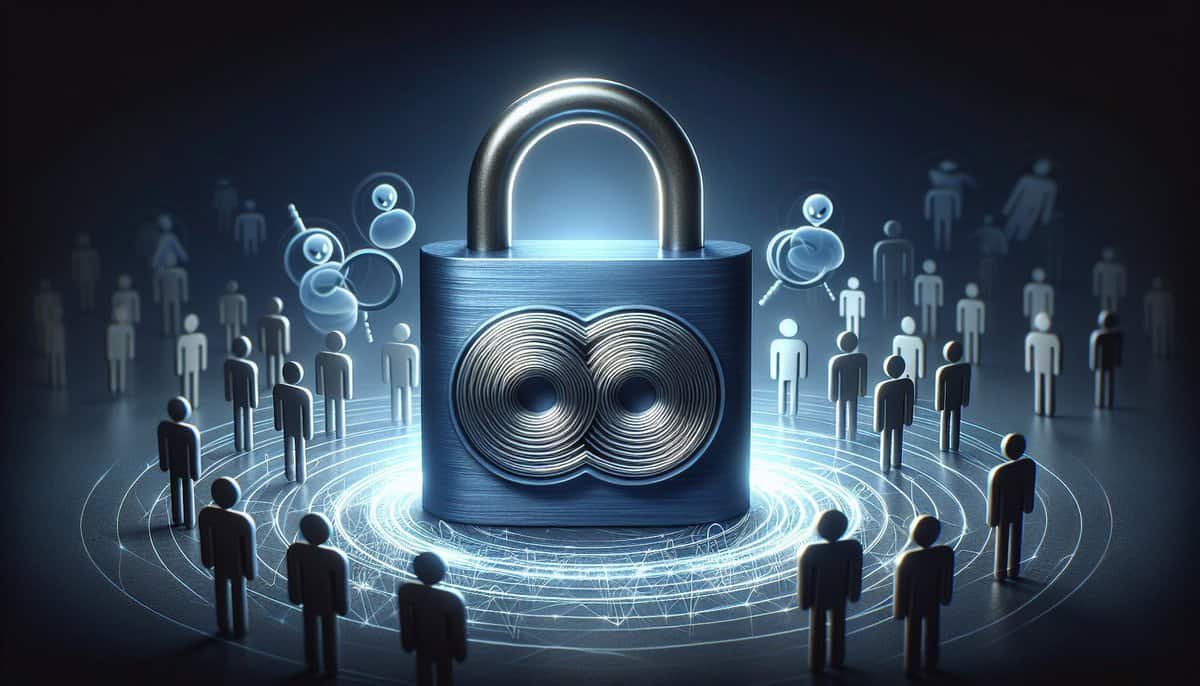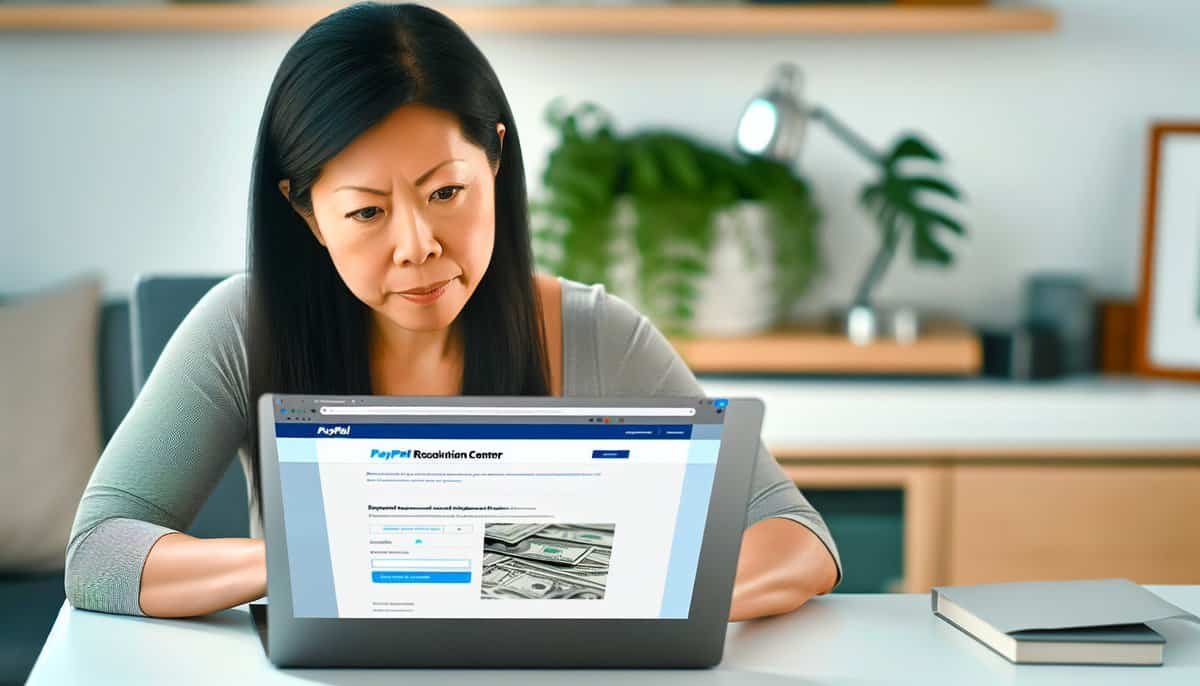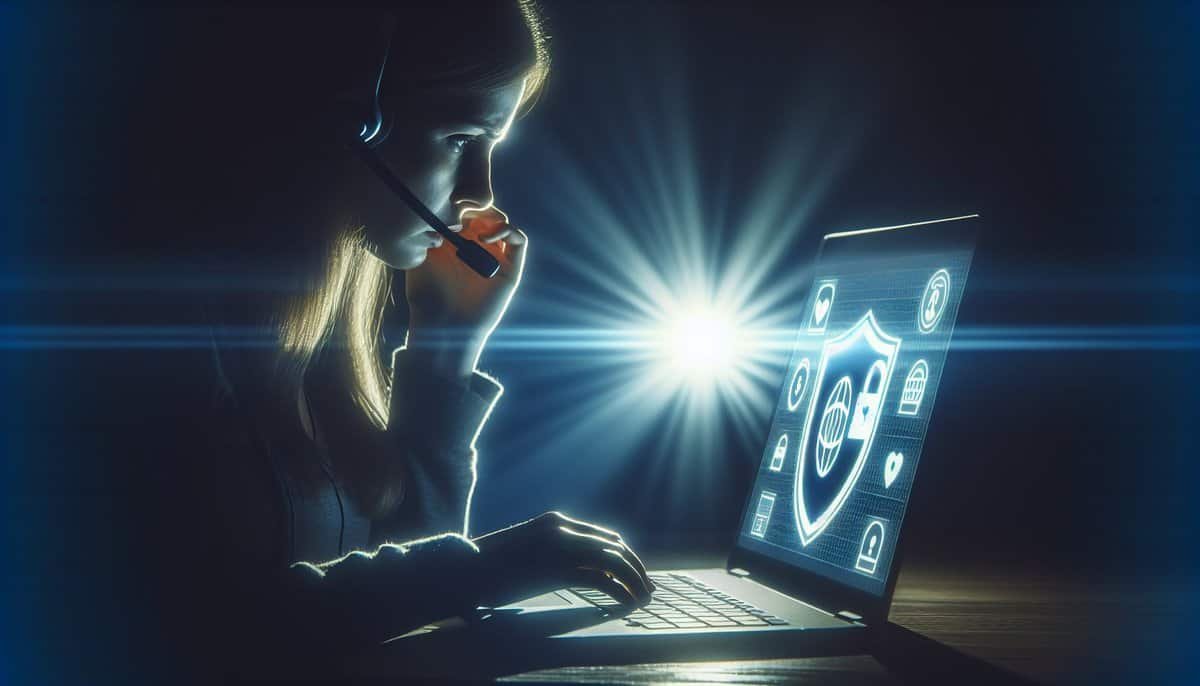Outsmarting Paypal Invoice Scams: Pro Tips to Protect Your Money

We may earn a small fee from the companies mentioned in this post.
Have you encountered a suspicious PayPal invoice recently? Learn to recognise and avoid PayPal invoice scams with our essential easy to read guide. Discover the immediate steps you can take to steer clear of fraudsters and secure your PayPal account. If you suspect you’ve already been scammed, we’ll also show you what to do next, ensuring you’re prepared to confront these threats.
Key Takeaways
PayPal invoice scams involve fake invoices using the platform’s official notification system to appear legitimate, leveraging common tactics such as phishing emails and social engineering to deceive users.
Protecting your PayPal account requires vigilance, such as never sharing your password, using two-factor authentication, verifying transaction details, and using PayPal’s security measures like Seller and Buyer Protection.
In case of suspected fraud, assess the situation carefully, verify with the seller or service provider, report suspicious activity through PayPal’s reporting tools, and consider filing a police report if you’ve fallen victim to a scam.
Recognising Paypal Invoice Scams

Have you ever received a PayPal invoice that left you scratching your head? You’re not alone. Scammers are exploiting PayPal’s invoicing feature, using the platform’s official notification system to lend authenticity to their fraudulent requests.
These fake invoices often come complete with official-looking messages and fraudulent customer service lines that lead directly to the scammer, putting your financial security at risk due to the PayPal invoice scam.
Understanding the common tactics used by scammers, such as phishing scams, emails and social engineering techniques, is a key strategy in thwarting these deceitful schemes.
Identifying Red Flags in Fake Invoices
When examining a PayPal invoice, keep your eyes peeled for red flags that scream “fraud.” Here are some signs to watch out for:
An impersonal greeting such as “Dear User” is a telltale sign of a fake invoice.
Incorrect customer service numbers provided within the invoice are a direct hotline to trouble.
Watch out for grammar slip-ups and odd formatting—they’re clear indicators that the invoice may not be from PayPal at all.
A professional appearance and small amounts shouldn’t lower your guard, as scammers often rely on a numbers game where even small amounts can accumulate if enough people are deceived.
If the information seems familiar, it might be because it’s been copied from other sources—another red flag to be aware of. Remember, when in doubt, always use the official PayPal customer service number, rather than any number listed on the invoice.
Phishing Emails and Their Tactics
“Phishing email scams are the bread and butter of the scamming world, and PayPal users are not exempt from these deceitful tactics. These emails often contain malicious links or attachments that can install malware on your device, granting scammers access to your private information.
They may look secure, but these links could lead you down a rabbit hole to fake websites designed to harvest your credentials, making it a classic phishing scam.
Scammers employ false warnings about account suspension to induce you into hastily entering your details on a counterfeit site. Instead of clicking through, take a moment to navigate directly to PayPal’s website, especially if it’s a password reset communication. This simple step can keep you safe from the wolves in sheep’s clothing.
Social Engineering in Scams
The art of deception isn’t just about the technical tricks; it’s also about playing with human psychology. Scammers are adept at weaving tales that prompt panic, using false urgency to provoke emotional decisions from their victims. They may present a fake problem and provide a scam help desk phone number, enticing you to directly contact the scammer.
In some cases, they forge scenarios that raise concerns over unauthorised purchases, pushing you to call the number of a fake PayPal customer service representative. It’s a sinister game of trust, and the only way to win is not to play.
Safeguarding Your Paypal Account

Your PayPal account is a gateway to your finances, and securing it should be a top priority. The golden rule? Never share your PayPal password, as PayPal will never ask for it.
Two-factor authentication (2FA) is your digital bodyguard, providing an extra layer of security beyond your password. By requiring a one-time code received via SMS or an authenticator app, 2FA makes it significantly harder for unauthorised users to gain access to your account.
When an unfamiliar invoice or money request pops up, pressing “pay” should not be your first instinct. Instead, step back and scrutinise the request without engaging with any suspicious links or contact methods. PayPal’s proactive stance includes Seller and Buyer Protection, which safeguards transactions made within the platform and helps in identifying and banning scammers.
Verifying Transactions and Invoices
Verifying the authenticity of an invoice before payment is paramount. Here are some steps to follow:
Compare the details in the invoice against the transaction history in your PayPal account. Mismatched information is a red flag.
Check the seller’s confirmed status on PayPal.
Ensure that the invoice details like the company name, invoice number, and recipient are accurate and align with your records.
It’s also wise to review financial details and confirm the receipt of goods or services with the relevant parties before proceeding with payment. This due diligence is your shield against unwarranted invoices.
Strengthening Account Security
A robust PayPal password is a fortress against unauthorised access. Create one that’s a mix of letters, numbers, and special characters—and steer clear of personal information like birthdays or pet names. And don’t just stop at a strong password; enable 2FA to add a one-time code requirement to your login process.
PayPal’s passkey and PIN code options offer a balance between convenience and security, ensuring you can access your account with ease while keeping potential intruders out.
In case of a credential-stuffing phishing attack, where compromised credentials are used en masse, you could be compromised without even knowing. If you suspect any foul play, immediately change your PayPal password, update your security questions, and consider running an antivirus scan.
Handling Suspicious Money Requests

Have you ever been urged to send money or pay an invoice that doesn’t quite add up? This could be a trap set by scammers. Even if PayPal has disabled a scammer’s payment link, the fraudulent phone numbers in the invoice or scam emails might still be active, and calling them could put you in danger. Engaging with a scammer over the phone could lead to bank account theft or identity theft, so it’s imperative to ignore any numbers provided in the invoice.
And if you’re selling something, be wary of claims that the buyer has overpaid and requests a refund of the excess money—it’s a classic scammer move, often with no actual payment made. To protect yourself, always double-check the transaction details and keep a seller note for your records.
Assessing the Situation
When faced with a suspicious money request, take a step back and assess the situation. Scammers love to create a sense of urgency, using vague language about the purchase and implying that immediate payment is necessary. Don’t let the fact that a PayPal user is verified lull you into a false sense of security; scammers can hide in plain sight.
Instead of responding to the invoice directly, go to your PayPal account and verify the transaction there. This cautious approach can save you from falling into a scammer’s trap.
Contacting the Seller or Service Provider
Confirming the invoice’s authenticity is vital before you part with your money. Reach out to the seller or service provider using verified contact information to ensure that the invoice from PayPal is legitimate. Make sure that all product or service deliveries related to the PayPal invoice are confirmed and approved by the seller.
Ensure that the contact details for the invoicing party are accurate and check the account status before reporting any suspicious activity. Only after completing these verification steps should you proceed with payment.
Reporting Suspicious Activity

If you encounter a suspicious money request or invoice on PayPal or paypal app, don’t hesitate to report it. Use the PayPal website or app to mark the request as suspicious, and follow the provided steps to alert PayPal’s team. Should you find yourself with a fraudulent invoice, change your password, update your security questions, and contact PayPal through official channels.
Keep in mind that an error message when attempting to view and pay an invoice might indicate that PayPal has already restricted the merchant for scam activities. And if you’ve had an unpleasant experience with a seller or didn’t receive an item as described, report the issue to PayPal for investigation and to see if you’re eligible for buyer protection claims.
What to Do If You’ve Fallen Victim to a PayPal Invoice Scam

Discovering that you’ve been scammed can be a distressing experience. But don’t lose hope—there are steps you can take to rectify and resolve the situation and protect yourself from further harm.
The first step is to contact PayPal’s Resolution Centre to report the fraud.
Contacting PayPal Customer Support
If you unluckily fall victim to a PayPal invoice scam, it is paramount that you reach out to customer support. Here’s how:
Log into your PayPal account.
Use the Message Centre to initiate a new message detailing your situation.
If you’re on the move, the PayPal mobile app allows you to contact customer support by tapping your profile photo, accessing the Message Centre, and following the instructions.
Additionally, the contact page on the PayPal website offers options to message, call, or live chat with customer support, ensuring you have multiple avenues to seek help.
Utilising the Resolution Centre
If unauthorised activity has occurred on your account, PayPal’s Resolution Centre is there to help you navigate the reporting process. For web users, click on ‘Report a problem,’ select the questionable payment, and follow the steps to report unauthorised activity.
The PayPal app provides a similar mechanism for reporting, guiding you through the process after tapping ‘Wallet’ and selecting the transaction in question. Once you’ve filed a report, PayPal will investigate the matter and typically respond within 10 days.
Before reporting, double-check that the charge isn’t from a family member or an automatic subscription that slipped your mind.
Filing a Police Report
If you’ve been scammed, it’s vital not to overlook the step of filing a police report. Reporting the incident to local authorities not only helps protect you but also contributes to broader efforts to keep the online community safe. In the United States, you can report PayPal scams to the Internet Crime Complaint Center (IC3) as well as to your local law enforcement.
In the UK, Action Fraud is the go-to place for reporting scams in England and Wales, while Police Scotland handles such matters in Scotland. Reach out to your local law enforcement, especially if they have a dedicated cybercrime unit, to ensure your case receives the attention it deserves.
Summary
The world of PayPal invoice scams is fraught with danger, but with the right knowledge and vigilance, you can navigate it safely. Remember to look out for red flags in invoices, be wary of phishing emails, and understand the tactics of social engineering.
Keep your PayPal account secure with strong passwords and two-factor authentication, and always assess money requests with a critical eye. If you suspect fraud, don’t hesitate to contact the seller, service provider, or PayPal directly, and report any suspicious activity.
If you do fall victim to a scam, know that there are resources at your disposal—contact PayPal customer support, utilise the Resolution Centre, and file a police report. By taking these measures, you can protect yourself and contribute to a safer online environment for everyone.
Frequently Asked Questions
Can I ignore a fake PayPal invoice?
Yes, you should ignore a fake PayPal invoice Scam and report it to PayPal to prevent falling victim to a scam. Do not pay the fake invoice, or engage with any provided contact information.
What if someone sent me an invoice on PayPal that I didn’t order?
If you receive an unexpected invoice on PayPal, it’s likely a phishing scam. Report the issue and avoid responding via text message or sending any money, as it could be fraudulent. Take caution when dealing with such invoices.
How do you know if someone is scamming you through PayPal?
If you receive an email, check the sender’s actual email address – it should be from PayPal.com. Avoid clicking on links, filling out forms, or paying fees if asked for. Be cautious if the person uses an email address that does not end with “@paypal.com” – this could be a sign of a scam. Also, watch out for fake URLs, requests for sensitive information, and poorly written messages.
How can I ensure my PayPal account is secure?
To ensure your PayPal account is secure, create a strong, unique password, enable two-factor authentication, and refrain from sharing your password or sensitive information with anyone. Keep an eye on your PayPal activity to catch any unauthorised transactions.
What steps should I take if I’ve fallen victim to a PayPal invoice scam?
If you’ve fallen victim to a PayPal invoice scam, it’s crucial to contact PayPal customer support and report the scam through the Resolution Centre. It’s also important to change your account’s password and security questions, and consider filing a police report to combat online fraud.
Useful Reference Websites
PayPal Official Resources
- PayPal UK Phishing Information
- URL: PayPal UK Phishing
- Description: This official PayPal page details phishing scams, including those involving fake invoices and money requests. It offers advice on how to recognise phishing attempts and steps to take if you encounter a suspicious email or SMS claiming to be from PayPal.
- PayPal Safety and Security
- URL: PayPal Safety and Security
- Description: Provides comprehensive information on PayPal’s purchase protection for buyers, highlighting the security measures PayPal employs to keep transactions secure. It also outlines what is covered under PayPal’s Purchase Protection and how to report unauthorised transactions.
UK Government and Police Websites
- Action Fraud
- Description: Action Fraud is the UK’s national reporting center for fraud and cybercrime. If you’ve been scammed, defrauded, or experienced cybercrime, you can report it to Action Fraud.
- Relevant for: Reporting PayPal invoice scams and getting advice on the next steps to take.
- National Cyber Security Centre (NCSC)
- Description: The NCSC provides guidance on how to stay secure online, including how to protect yourself from phishing attacks and other forms of cybercrime.
- Relevant for: Understanding the cybersecurity aspect of PayPal invoice scams and learning how to protect personal and financial information online.
- City of London Police – Fraud
- Description: The City of London Police is responsible for the National Fraud Intelligence Bureau and offers information on different types of fraud, including online fraud.
- Relevant for: Learning about the latest fraud trends and prevention methods, and reporting instances of fraud.
- Metropolitan Police – Fraud and Cyber Crime Unit
- Description: The Fraud and Cyber Crime Unit of the Metropolitan Police deals with fraud and cybercrime incidents, providing prevention advice and investigation services.
- Relevant for: Reporting scams in the London area and getting resources on fraud prevention.
These websites will provide information on PayPal invoice scams.
With over three decades of experience in the heart of London’s financial sector, I have dedicated my career to the pursuit of robust cybersecurity practices and IT leadership. As a Certified Information Systems Security Professional (CISSP), Certified Information Security Manager (CISM), Certified Chief Information Security Officer (C|CISO), Certified Ethical Hacker (CEH), and Computer Hacking Forensic Investigator (CHFI), I bring a wealth of knowledge and expertise to the table.
My journey in the field of cybersecurity has not only been about personal growth but also about sharing my insights with others. As an international speaker, I have had the privilege of addressing audiences worldwide, discussing the importance of cybersecurity in today’s digital age. My passion for knowledge sharing extends to my work as an author and blogger, where I delve into the complexities of cybersecurity, offering practical advice and thought leadership.
In my role as a CISO and Head of IT, I have overseen the development and implementation of comprehensive information security and IT strategies. My focus has always been on creating resilient systems capable of withstanding the evolving landscape of cyber threats.
My Master’s degree in Cybersecurity has provided a solid academic foundation, which, when combined with my practical experience, allows me to approach cybersecurity from a holistic perspective.
I am always open to connecting with other professionals in the field, sharing knowledge, and exploring new opportunities. Let’s secure the digital world together.

